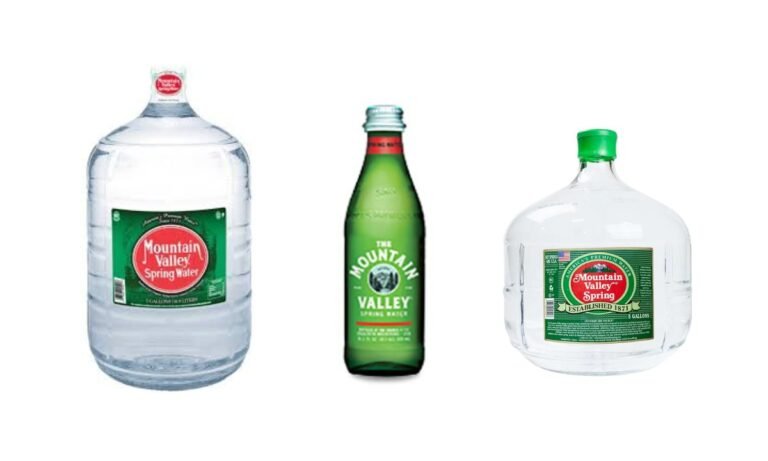Have you ever wondered what makes water truly refreshing and pure? Mountain Valley Spring Water is not just any water; it’s a testament to nature’s perfection. Known for its pristine quality and incredible health benefits, this spring water has been a favorite for generations. Let’s dive into its origins, benefits, and what sets it apart.
Did you know that Mountain Valley Spring Water originates from the untouched Ouachita Mountains in Arkansas? These mountains are renowned for their natural beauty and geological formations, which filter water through layers of mineral-rich rocks. This process ensures the water is naturally purified and enriched with essential minerals.
Sources: The Natural Process
When it comes to water, the source is everything. Mountain Valley Spring Water is collected from a spring that’s been flowing for thousands of years. The water undergoes a natural filtration process, absorbing minerals like calcium, magnesium, and potassium along the way. Think of it as nature’s way of crafting the perfect drink.
Unique Features of Mountain Valley Spring Water
What makes this water stand out? Here are some unique features:
- Natural Alkalinity: With a pH level between 7.3 and 7.8, it supports a balanced body pH.
- Mineral Content: Enriched with vital minerals that boost overall health.
- Award-Winning Taste: Crisp and refreshing, it’s a favorite among connoisseurs.
Health Benefits: Why It’s Good for You
Water is life, but not all water is created equal. Mountain Valley Spring Water offers multiple health benefits:
- Hydration: Keeps you energized and refreshed.
- Bone Health: High calcium levels support strong bones.
- Heart Health: Magnesium aids in maintaining a healthy heart rhythm.
- Detoxification: Its natural alkalinity helps flush out toxins.
Sustainability and Environmental Impact
In a world where sustainability is crucial, Mountain Valley Spring Water leads by example. The company prioritizes eco-friendly practices, including:
- Sustainable Sourcing: Ensuring the spring remains unspoiled for future generations.
- Minimal Carbon Footprint: Using energy-efficient methods for bottling and transportation.
- Recyclable Packaging: Glass bottles that are 100% recyclable.
Packaging Options: Keeping Purity Intact
The iconic green glass bottles of Mountain Valley Spring Water are not just aesthetic; they’re functional. Glass ensures the water retains its purity and taste, free from contaminants often found in plastic.
Typical bottle packaging sizes for Mountain Valley Spring Water:
| Bottle Size | Material | Description |
| 11.3 oz (335 ml) | Glass | Ideal for single servings or on-the-go hydration. |
| 16.9 oz (500 ml) | Glass | Popular medium-sized bottle for daily use. |
| 25.4 oz (750 ml) | Glass | Perfect for dining or sharing at small gatherings. |
| 33.8 oz (1 liter) | Glass | Larger size for extended hydration or family use. |
| 1 gallon (3.78 L) | Glass or Plastic | Best for home use and convenient refills. |
| 5 gallons (18.9 L) | Plastic | Designed for water coolers in offices or homes. |
Mountain Valley Spring Water in Everyday Life
From family dinners to outdoor adventures, this water complements every setting. It’s perfect for:
- Athletes: A natural way to replenish lost minerals.
- Chefs: Enhances the flavor of gourmet meals.
- Families: A healthy choice for all ages.
Celebrity and Historical Endorsements
Did you know that Mountain Valley Spring Water has been a favorite of celebrities and even U.S. presidents? Elvis Presley and John F. Kennedy were among its fans. Its reputation for excellence has stood the test of time.
Mountain Valley vs. Other Spring Waters
What sets Mountain Valley Spring Water apart from competitors?
- Source: A pristine, protected spring vs. commercial wells.
- Taste: Naturally crisp and clean, with no artificial additives.
- Sustainability: A strong commitment to the environment.
Marketing Campaigns of Mountain Valley Spring Water
Mountain Valley Spring Water executes its marketing campaigns by emphasizing its heritage, premium quality, and health benefits. The brand highlights its natural spring source, which has been delivering mineral-rich water for over 150 years, to build trust and authenticity.
Through visually appealing advertisements, collaborations with wellness influencers, and sponsorship of health-focused events, the company positions itself as a luxury and health-conscious choice.
Additionally, Mountain Valley leverages social media platforms to engage with customers, sharing stories about sustainability and the purity of its products, thus creating a strong emotional connection with its audience.
How to Choose the Best Spring Water
Here are some tips to ensure you’re getting the best:
- Check the Source: Ensure it’s from a protected spring.
- Look for Natural Alkalinity: This indicates a balanced mineral profile.
- Read Reviews: Trust the experiences of other consumers.
Conclusion
Mountain Valley Spring Water isn’t just water; it’s a lifestyle choice. With its natural origins, rich mineral content, and eco-friendly practices, it’s the epitome of purity and health. Whether you’re an athlete, a health enthusiast, or someone who values quality, this spring water is a perfect choice. So why settle for ordinary when you can have the extraordinary?
FAQs
1. What is the source of Mountain Valley Spring Water?
Mountain Valley Spring Water comes from a protected spring in the Ouachita Mountains, Arkansas.
2. Is Mountain Valley Spring Water alkaline?
Yes, it has a natural pH level of 7.3 to 7.8, making it slightly alkaline.
3. Is the packaging eco-friendly?
Absolutely. The water is bottled in recyclable glass, ensuring environmental sustainability.
4. Can children drink Mountain Valley Spring Water?
Yes, it’s safe and healthy for people of all ages, including children.
5. How does Mountain Valley Spring Water compare to tap water?
Unlike tap water, it’s naturally filtered and enriched with minerals, offering superior taste and health benefits.
Explore Our More Blogs:
The Rich History and Culture of Mohallah Malak Khel Ghalegay, Barikot
What Day Is Leaf Pickup in Bristol, PA 19007? Everything You Need to Know
Good for Health, Bad for Education: Exploring the Modern Lifestyle Dilemma

